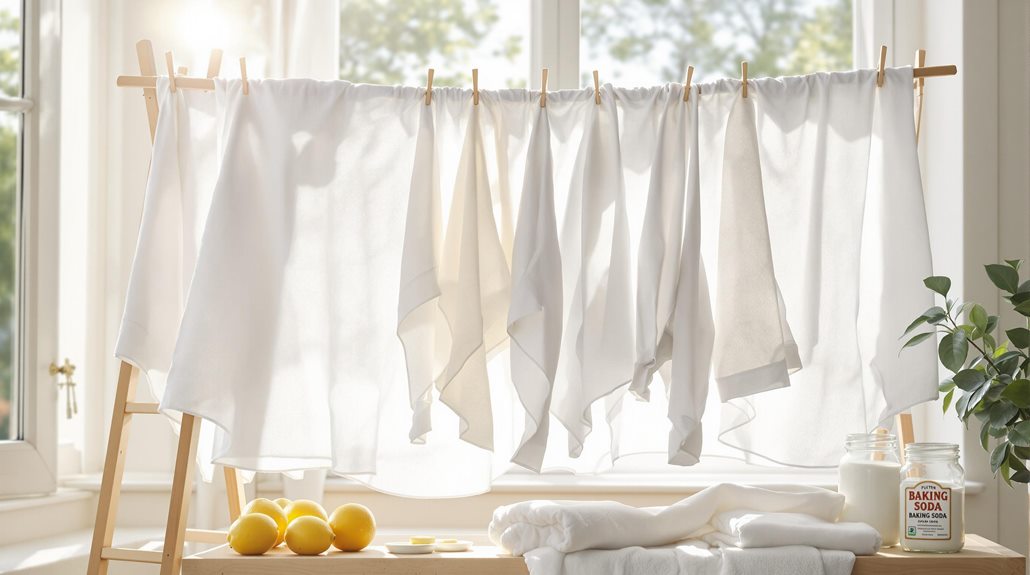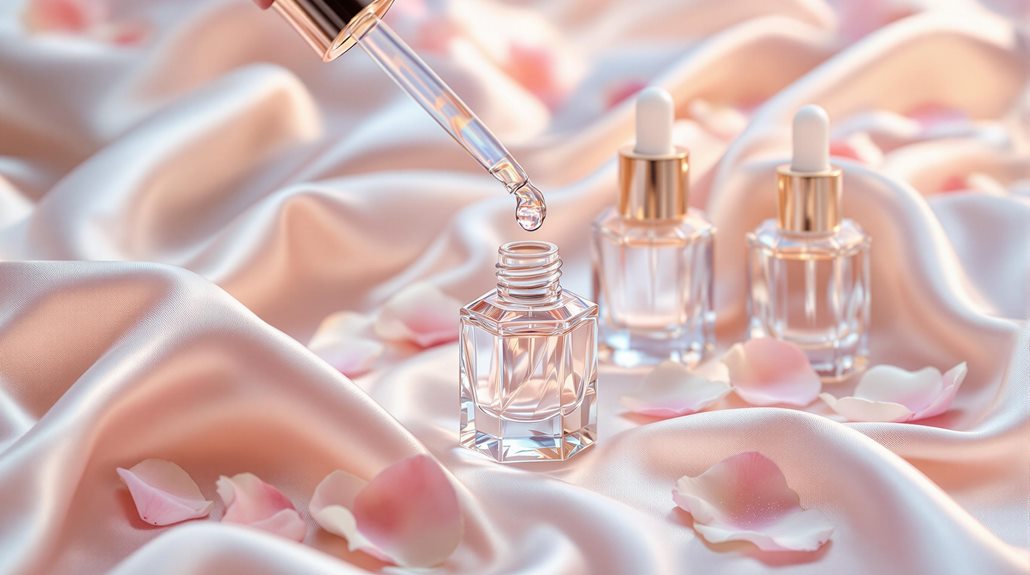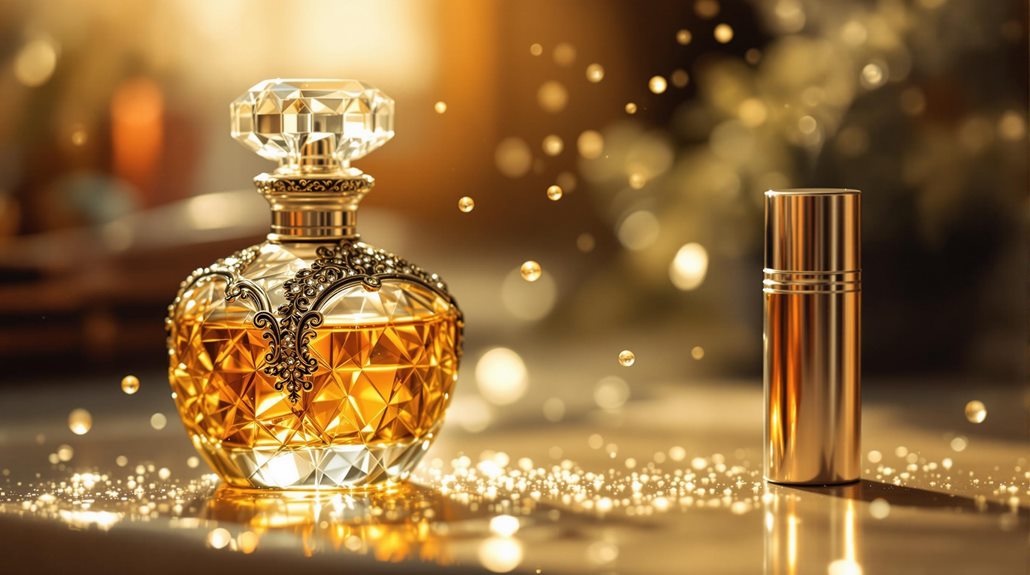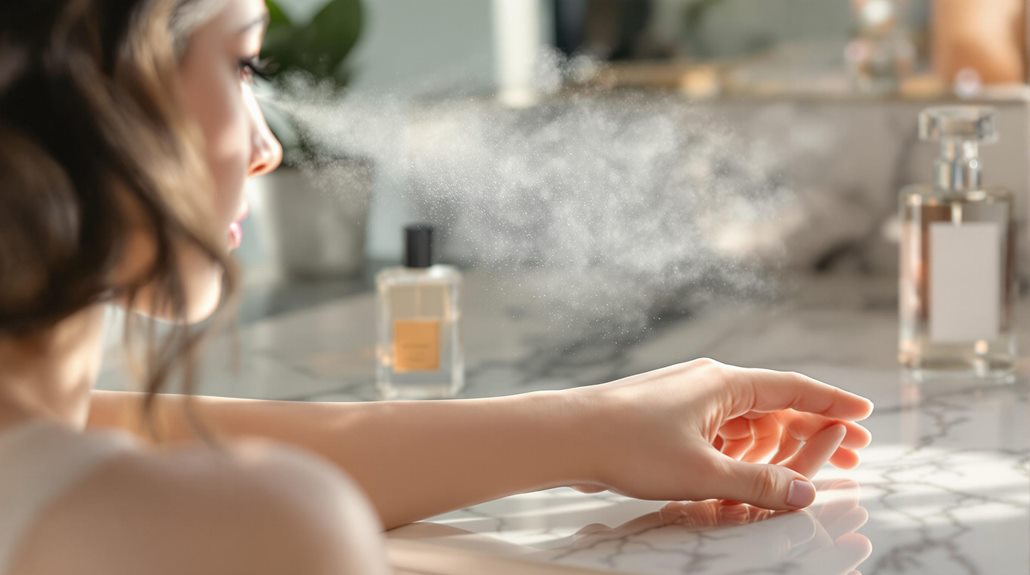The Art and Science Behind How Perfume Is Made
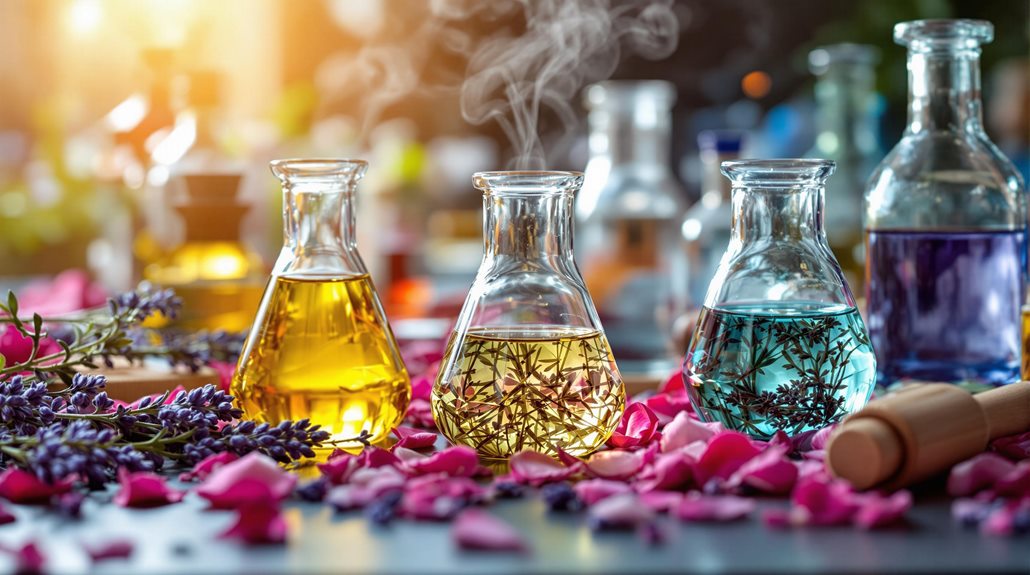
Perfume-making blends ancient traditions with modern scientific precision in a fascinating process you'll find both artistic and technical. You'll uncover how expert perfumers extract precious fragrances using methods like steam distillation, cold-pressing, and solvent extraction. They'll carefully layer these ingredients following the fragrance pyramid: volatile top notes create first impressions, heart notes form the core character, and base notes provide lasting depth. Each scent undergoes rigorous testing and refinement through expert panels and analytical procedures. This intricate dance between art and science transforms raw materials into the alluring fragrances that grace your skin.
Ancient Origins of Perfumery
Throughout history, ancient civilizations commanded the art of creating fragrances long before modern perfumery emerged. You'll find that these early perfume makers relied on natural materials, combining incense, essential oils, and aromatic plants to craft their signature scents and mask unwanted odors.
The Egyptians pioneered innovative techniques like enfleurage, where they'd press flowers into fats and oils to capture their delicate fragrances. This method proved particularly effective for extracting scents from delicate blooms that couldn't withstand harsher processes. The Greeks and Romans later developed maceration, a technique where you'd soak organic materials in oils or water to release their aromatic compounds.
A significant breakthrough came when the Persian scholar Avicenna invented steam distillation, revolutionizing how you'd extract essential oils from plants. This method greatly improved the quality and yield of fragrant compounds. To add complexity and depth to their creations, ancient perfumers also incorporated animal-derived ingredients. You'd find exotic materials like musk, ambergris, and civet in their formulations, which provided rich, sensual base notes that helped their fragrances last longer.
Raw Material Extraction Methods
Modern perfumery relies on an array of extraction techniques to obtain fragrant compounds from natural sources. You'll find that perfume makers employ several sophisticated methods to capture the essence of raw materials, ranging from traditional processes to state-of-the-art technologies.
Natural essential oils emerge through steam distillation, where steam passes through plant materials to release their aromatic compounds. Solvent extraction helps create absolutes from delicate flowers like jasmine and rose, preserving their subtle fragrances that might otherwise be destroyed by heat. Cold-pressing extracts oils from citrus peels, maintaining their fresh, lively characteristics. Enfleurage, though less common today, uses fats to absorb flower fragrances, particularly for delicate blooms. Animal-derived ingredients like musk, civet, and ambergris require specialized collection and processing methods.
While these natural extraction methods remain indispensable to perfumery, you'll also encounter synthetic compounds created in laboratories. These synthetic alternatives often provide consistency and sustainability that natural extractions can't always guarantee. Together, both natural and synthetic extraction methods give perfumers the complete palette they need to create complex, layered fragrances.
The Fragrance Pyramid Architecture
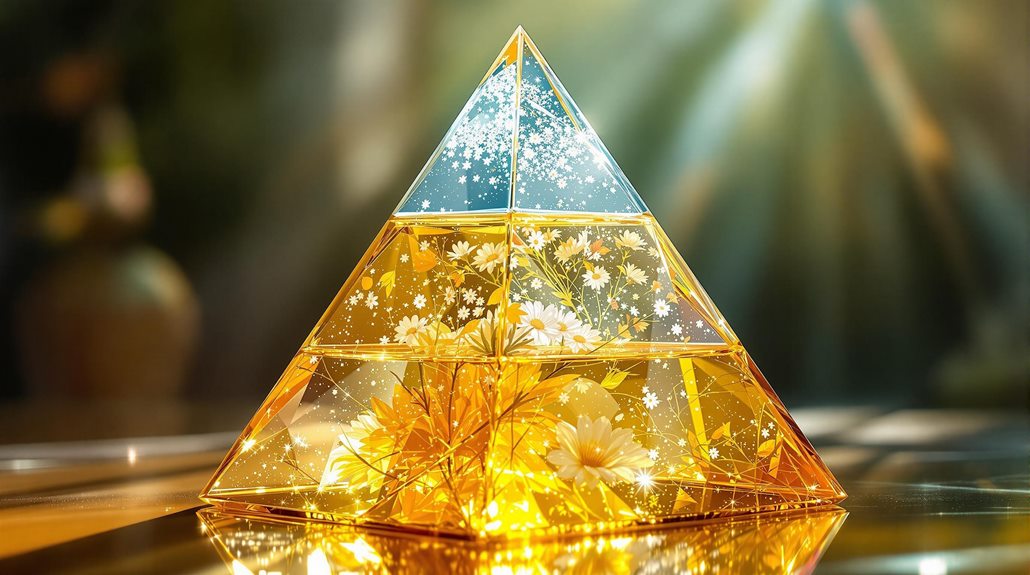
Once raw materials have been expertly extracted, they must be strategically positioned within perfumery's most fundamental structure: the fragrance pyramid. Also known as the olfactive pyramid, this three-tiered architecture creates a harmonious blend that evolves on your skin over time.
You'll first experience the top notes, which are highly volatile aromatic notes that generate your initial impression of the fragrance. These fleeting elements, often featuring citrus or herbal accords, quickly give way to the heart notes. These middle notes form the fragrance's core character, delivering depth through floral, fruity, or spicy elements that define the scent's personality.
The base notes anchor the entire composition, providing the foundation that maintains your fragrance's longevity. You'll find these deep, rich elements - typically woody, resinous, or musky - lingering on your skin long after the top and middle notes have faded. Professional perfumers carefully balance these three layers, ensuring each note complements the others perfectly. When you understand this pyramid structure, you'll better appreciate how your favorite fragrances develop and why they're crafted to create such compelling olfactory experiences.
Modern Blending Techniques
Professional perfumers employ sophisticated blending techniques that combine art and science to create alluring fragrances. In the process of making perfumes, you'll find that modern Creation methods integrate traditional practices with innovative approaches. The Science behind fragrance development relies on precise measurements and careful manipulation of both natural oils and synthetic ingredients.
When you investigate the Art of perfume making, you'll uncover these essential modern blending techniques:
- Advanced extraction methods like maceration and enfleurage to capture natural essences
- Precise measurement and combination of hundreds of ingredients
- Repetitive refinement through multiple testing phases
- Strategic layering of notes following the fragrance pyramid structure
- Controlled aging and maturation processes
You'll notice that perfumers carefully balance each component while creating their compositions. They'll adjust proportions repeatedly until achieving the perfect harmony between top, middle, and base notes. This fastidious attention to detail guarantees that every ingredient contributes to the overall scent profile exactly as intended. The final stage involves allowing the blend to mature, letting the various components meld together naturally, which results in a more refined and sophisticated fragrance.
Quality Control and Testing
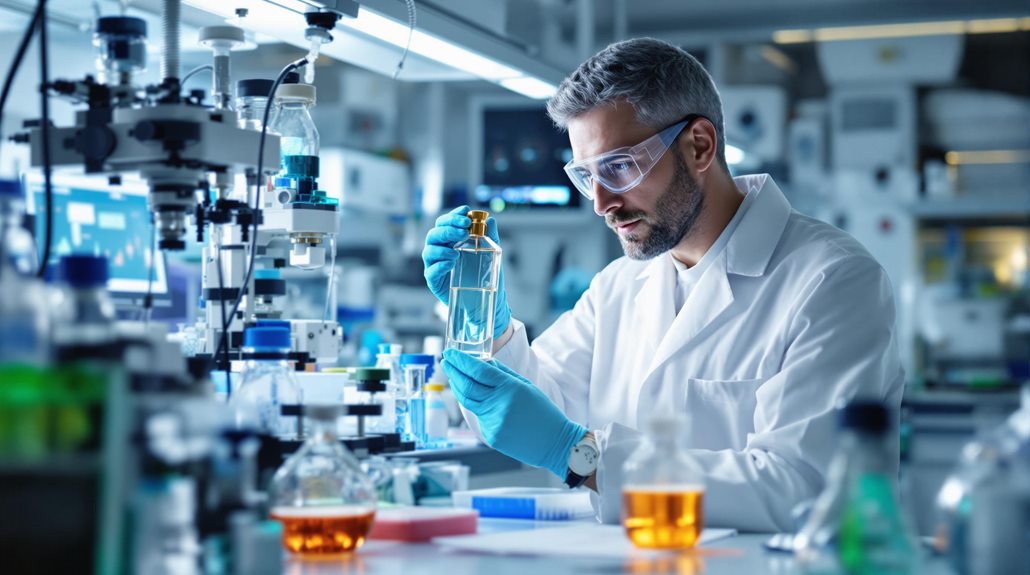
The painstaking art of perfume blending flows naturally into thorough quality control measures that protect the integrity of every fragrance. You'll find that rigorous testing occurs at multiple stages throughout the production process, guaranteeing that each bottle meets the highest standards of excellence.
Quality control begins with analytical testing to verify the chemical composition and purity of all ingredients used in the formulation. Expert panels conduct detailed sensory evaluation sessions, where they'll assess the fragrance's overall performance, including its scent profile and how it develops over time. They're specifically trained to detect any inconsistencies or deviations from the intended fragrance profile.
Testing for fragrance stability and longevity is vital to ensure that your perfume will maintain its intended characteristics under various conditions. The perfume must demonstrate consistent performance across different temperature ranges and exposure to light. You can trust that these comprehensive quality control procedures help maintain uniformity from batch to batch. Through this detailed combination of scientific analysis and expert evaluation, perfume houses guarantee you'll receive a fragrance that consistently delivers an exceptional sensory experience.
Conclusion
You've now glimpsed the complex world of perfume creation, from its ancient beginnings to today's sophisticated methods. Whether you're drawn to the artistry of fragrance pyramids or the precision of scientific extraction, you'll never experience perfume quite the same way again. The next time you spritz your favorite scent, you'll appreciate the delicate balance of art and science that brings it to life.

